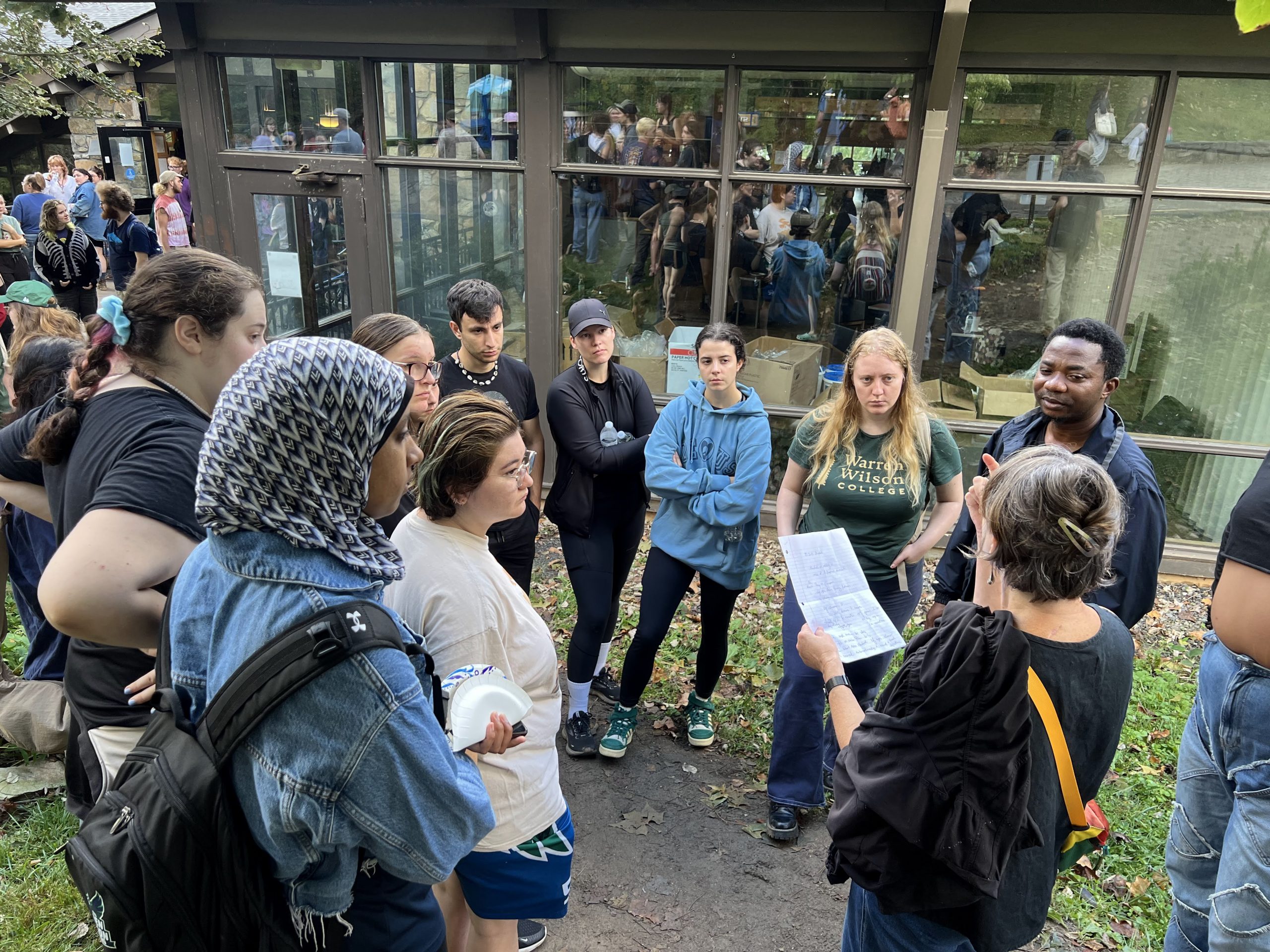Nothing prepared me for Hurricane Helene. One year ago, the storm pummeled the mountains and valleys of Western North Carolina and the small college where I live and teach.
The night of the floods, I lay alone in bed listening to the popping of pine trees falling. Then I woke to silence—the calm after the storm—and saw trees sliced through neighbors’ homes with power lines dangling in driveways. It would be weeks before we had electricity and nearly two months before we had potable water.
[time-brightcove not-tgx=”true”]
In the last year, I’ve seen firsthand how community is critical for facing climate disasters. As the Trump administration dismantled federal agencies like FEMA, the U.S. experienced a total of 27 climate disasters last year with $1 billion in damages each, more than five times the rate of 100 years ago. Yet studies have shown that neighborhoods with social infrastructure have increased capacity to survive such threats.
“Are you coming to the meeting?” my duplex neighbor asked after we’d assessed the flooding in the basement of our rental. Through word-of-mouth, we’d heard about the community meeting at 9:30 a.m. outside the college cafeteria. As students, staff, and faculty gathered, the college president assured us we would work together. “The interstates are closed and bridges are out,” he said. “But we’re going to take care of each other and the community.”
And so began the daily practice of “morning meetings” with updates from command central, a worn-out conference room in the cafeteria, powered by a generator. “Okay, we need 25 people to clear roads and 10 to make lunches.” With such directives, I joined a group clearing tree limbs off the streets. A retired electrician found a well so teams could haul non-potable water to flush toilets.
Read more: A Look at Damage From Hurricane Helene
As roads opened up, my lens on community expanded: Friends volunteered to prepare food with World Central Kitchen in nearby Beacon Village, where neighbors in kayaks rescued people from rooftops. Organizations such as the newly formed Swannanoa Communities Together advocated for rental and move-in assistance given the dire lack of affordable housing in this region.
The losses weren’t hypothetical. From my house, I saw search teams recovering bodies from the Swannanoa River. A former student lost his life in the floods; a friend was injured when a landslide of mud and boulders collided with her house.
Months after the floods, classes and crews of students began to stabilize the eroded streambanks of the river by planting 18,000 cuttings from willows, dogwoods, and other native species, a low-cost practice called livestaking.
One of my advisees, Maeve Williams, organized a group to build a tiny house and donate it to Beloved Asheville, a grassroots organization providing housing and support for those displaced. “Community is like a network of people who show up for each other,” she told me. “We had students, retirees, local tradespeople, churchgoers, and facilities staff working together on the tiny house. These were people you wouldn’t expect to be in the same place, but they shared their skills and stories for a greater cause.”
In late spring, a group of elders from a Unitarian Universalist congregation asked if my students could design a field trip on campus to assess recovery on the land. The storm dumped four feet of silt on our agricultural fields: A student named Shoshana Caldas led this project, first attending a UU service and then connecting the field trip to their values for climate justice. “Without the invitation from them, we wouldn’t have had this connection,” she said. “I couldn’t believe how interested they were in our work on the farm and garden.”
Marine biologist Ayana Elizabeth Johnson reminds us that 62% of Americans feel a personal responsibility to help reduce global warming, but many don’t know how to start. While most neighborhoods don’t have the human capital of a small college, we all have the capacity to get to know people in our community. Certainly bringing a casserole to a neighbor won’t reverse the climate crisis, but it’s one place to start: We can prepare food, create art, and share skills.
For this first anniversary of Helene, the second most deadly hurricane in the contiguous U.S. after Katrina, I’ve seen more events advertised than one person could ever attend, from church services to art installations. One gathering even included a raffle for a generator. Last week, I participated in a community planning process in Swannanoa designed to establish priorities for rebuilding. The organizers emphasized a timeline on the order of ten years, a sobering reality.
Read more: What I’ve Learned From a Life Filled With Hurricanes
In the short-term, disaster experts like Samantha Montano suggest calling Congressional representatives to restore funding for FEMA, signing up for emergency alerts, and advocating for local emergency management resources. In her book A Paradise Built in Hell, Rebecca Solnit analyzes the collective purpose felt after disasters and the implications for a future built on joy, not fear.
I refuse to see silver linings in a storm amplified by fossil fuel pollution, but I saw neighbors caring for each other despite political identities, a contrast to the headlines every day.
In the nearby town of Marshall this summer, I followed my friend Liz Teague whose folk-rock band played in the parking lot of a bike store and coffee shop rebuilt by owners who’d moved to the mountains after losing their home to Hurricane Katrina in 2005. Under a small tent, the band played original tunes amidst debris piles and empty shells of buildings interspersed with renovated businesses.
As the rain fell, I joined a group of women who held their colorful umbrellas high, pumping them in the air to the music, like a second-line procession in New Orleans. As my student Maeve Williams reminded me, “Resilience starts with relationships and how we treat and trust each other.”

